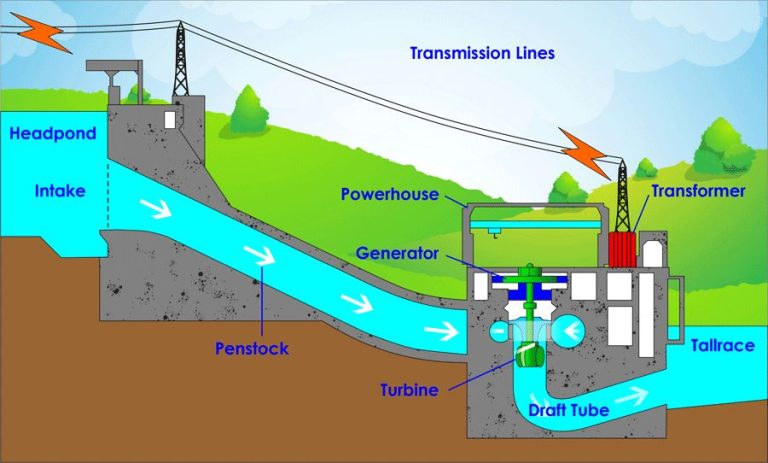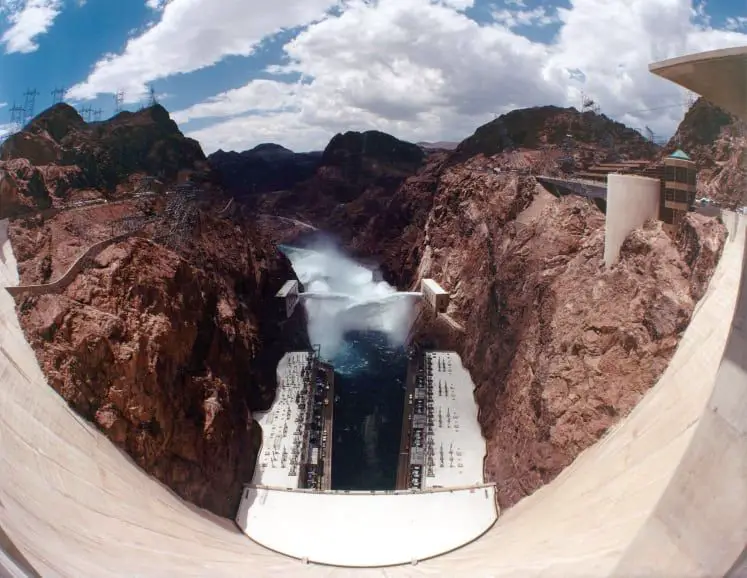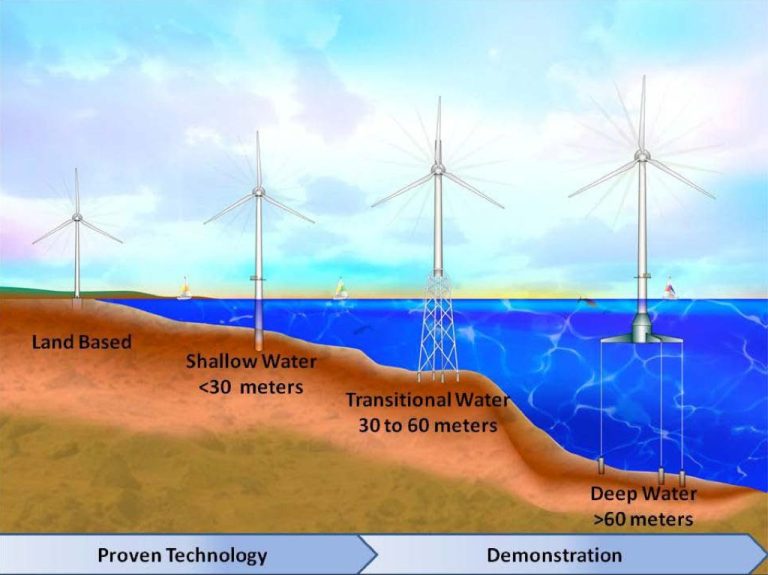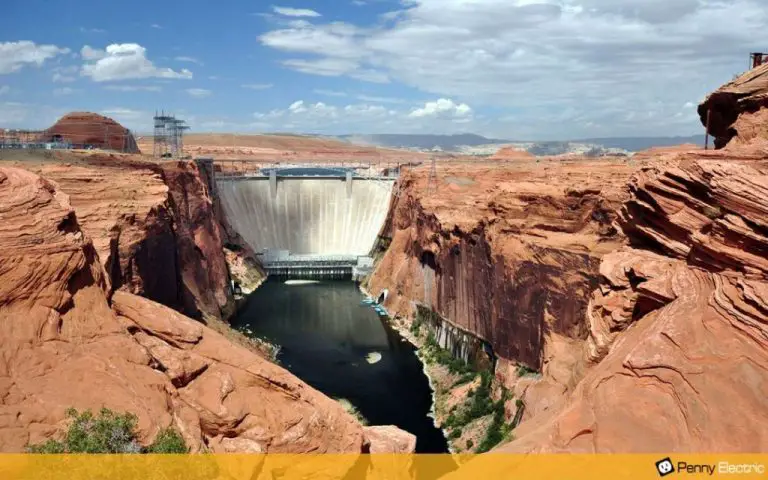Why Is Hydropower Good And Bad?
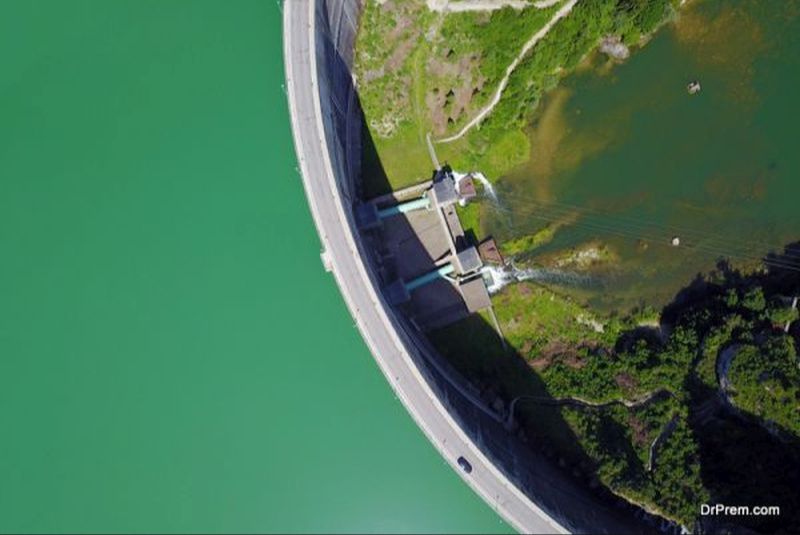
Hydropower is one of the oldest and largest sources of renewable energy, using flowing water to generate electricity. It offers several advantages such as being clean, renewable, reliable, and flexible. However, hydropower also has some drawbacks including high upfront costs, habitat destruction, and displacement of people. This article provides an overview of the main pros and cons of hydropower to understand why it is both praised and criticized as an energy source.
We will examine the benefits of hydropower’s low operating costs, ability to work with other renewables, and status as a mature technology. Then we will look at the downsides of expensive dams and power plants, impacts on river ecosystems, and methane emissions from reservoirs.
By weighing both sides, this article aims to provide a balanced perspective on the most important factors to consider when evaluating hydropower.
Clean and Renewable
Hydropower is a renewable energy source that does not emit greenhouse gases. The energy from flowing water makes the turbines spin to generate electricity, without burning any fossil fuels. This makes hydropower a clean and sustainable energy source compared to fossil fuels like coal or natural gas which release carbon dioxide and contribute to climate change. According to the Hydropower Factsheet from the International Hydropower Association, hydropower is a low-carbon technology which helps to mitigate the carbon emissions of fossil fuels.
Unlike non-renewable sources of energy, hydropower relies on the water cycle which is continuously renewed by nature. The water flows whether it is used to produce electricity or not. As long as there is flowing water, hydropower can generate clean electricity without running out.
Reliable
Hydropower is extremely reliable and produces energy constantly, unlike other renewable sources like solar and wind power that rely on certain weather conditions. Hydropower can generate electricity 24/7 as long as there is sufficient water flow. For example, a recent study by the U.S. Department of Energy found that even during California’s historic drought in 2021 which reduced hydropower capacity, hydropower plants still generated over 150 terawatt-hours of electricity across the western U.S. This reliability makes hydropower a consistent and dependable source of renewable energy.
According to the U.S. Energy Information Administration, hydropower accounted for over 6% of total U.S. electricity generation and over 40% of total U.S. renewable electricity generation in 2020. The ability of hydropower to produce electricity on demand makes it an important backbone of renewable energy alongside baseload sources like nuclear and natural gas. Compared to weather-dependent renewables like wind and solar which require backup power, hydropower can provide renewable energy around the clock to meet grid demand.
Flexible
One of the main advantages of hydropower is its flexibility in power generation. Hydropower plants can easily and quickly adjust their electricity output to meet real-time demand by controlling the amount of water released through the turbines (Source 1). This makes hydropower an ideal complement to intermittent renewable sources like wind and solar. When demand is high, hydropower can ramp up generation. When demand is low, excess electricity can be stored by pumping water upstream into reservoirs. This ability to generate power on demand by controlling water flow makes hydropower a highly flexible and valuable source of renewable electricity (Source 2).
Low Operating Costs
One of the main advantages of hydropower is its low operating costs compared to fossil fuel power plants. Unlike coal, natural gas, or oil plants, hydropower does not require any fuel to be burned to generate electricity. This means there are minimal fuel costs associated with running a hydropower plant once it is built and operational.
According to data from Statista, the average operating expenses for major investor-owned hydropower plants in the U.S. ranged from 0.43 to 0.95 mills per kWh generated between 1998 and 2022 (Statista). This is significantly lower than the operating costs of fossil fuel plants.
Hydropower’s minimal fuel costs make it very economical to run once the initial infrastructure is in place. The lack of ongoing fuel expenses is a major advantage of hydropower compared to conventional power sources that require continual purchases of coal, natural gas, or oil.
Expensive Upfront
Building hydroelectric dams and related infrastructure is very capital intensive, requiring huge upfront costs. According to IRENA, the average investment cost for large hydropower projects ranges from $1,050/kW to as high as $7,650/kW. For small hydropower projects, the range is between $1,300/kW and $8,000/kW.
High dam construction costs account for the largest share of hydroelectric project expenses. Massive amounts of concrete, steel, and labor are required for dam construction. Other major costs include turbines, generators, transmission lines, access roads, and land acquisition. According to Statista, in 2022 the average global installation cost for hydropower was $2,881 per kW.
The substantial upfront investment means hydroelectricity has some of the highest capital costs compared to other power generation methods. This can deter development of new hydropower facilities despite long-term cost advantages.
Habitat Destruction
Hydropower dams and reservoirs can cause significant habitat destruction and degradation. Reservoirs flood vast areas of land upstream, submerging terrestrial ecosystems and critical wildlife habitat (Palmeirim, 2021). For example, estimates suggest reservoirs have flooded 400,000 km2 globally, equivalent to the size of California (Winemiller et al., 2016). Flooding destroys forests, wetlands, and other habitats that are important for biodiversity.
The reservoirs themselves create artificial lake habitats that are poor replacements for the complex ecosystems they submerge. Studies show reservoir habitats support less biodiversity and favor invasive species over native ones (Perna & Cappo, 2020). Dams also act as barriers within river ecosystems, blocking the movement of migratory fish and other aquatic species. This fragments populations and alters food webs (Anderson et al., 2018).
Overall, hydropower development is a major driver of freshwater habitat loss worldwide. Researchers estimate over half of free-flowing large rivers are fragmented by dams (Grill et al., 2019). Protecting remaining free-flowing rivers and minimizing new dams is critical for preserving freshwater biodiversity.
Sources:
https://www.nature.com/articles/s42003-021-02878-5
https://www.sciencedaily.com/releases/2022/08/220826141751.htm
Methane Emissions
One of the downsides of hydropower is that the reservoirs created by dams emit significant amounts of methane, a potent greenhouse gas. Decaying plant matter that was flooded by the reservoir produces methane as a byproduct of decomposition. According to research cited by InsideClimate News, “the plant matter flooded by dams produces methane, a greenhouse gas about 25 times more potent than carbon dioxide over a 100-year period” (source). These methane emissions can continue for decades after a reservoir is initially flooded.
While hydropower itself does not burn fossil fuels, the methane emitted from reservoirs means it is not completely emissions-free. One estimate suggests hydropower reservoirs generate 1.3% of total global greenhouse gas emissions, though the actual figure may be higher due to limited data (InsideClimate News). More research is needed to accurately quantify methane emissions from hydropower dams.
Displaces People
Hydropower dam reservoirs often necessitate the flooding of inhabited valleys, displacing entire communities of people from their homes and ancestral lands. According to the article Hydropower Development and Involuntary Displacement, hydropower development projects lead to displacement risks including “landlessness, joblessness, homelessness, marginalization, food insecurity, increased morbidity and mortality, and social disarticulation.”
The creation of reservoirs through damming requires the flooding of land upstream, which frequently displaces rural populations who historically lived in the area. The MIT-based Displacement Research and Action Network reports that hydroelectric mega-projects often generate widespread community displacement. Resettlement of displaced peoples is inconsistent, with some communities left “economically and socially worse off” after relocation.
Conclusion
In summary, hydropower has both advantages and disadvantages. On the positive side, it is a renewable, reliable, and flexible energy source with low operating costs. The main downsides are the high upfront investment required for dams and other infrastructure, as well as the potential negative impacts on river ecosystems and communities displaced by reservoirs. While hydropower can provide clean electricity, each project requires careful consideration of environmental and social impacts. On balance, hydropower can be a good option as part of a diversified energy mix, especially when designed and operated responsibly.

